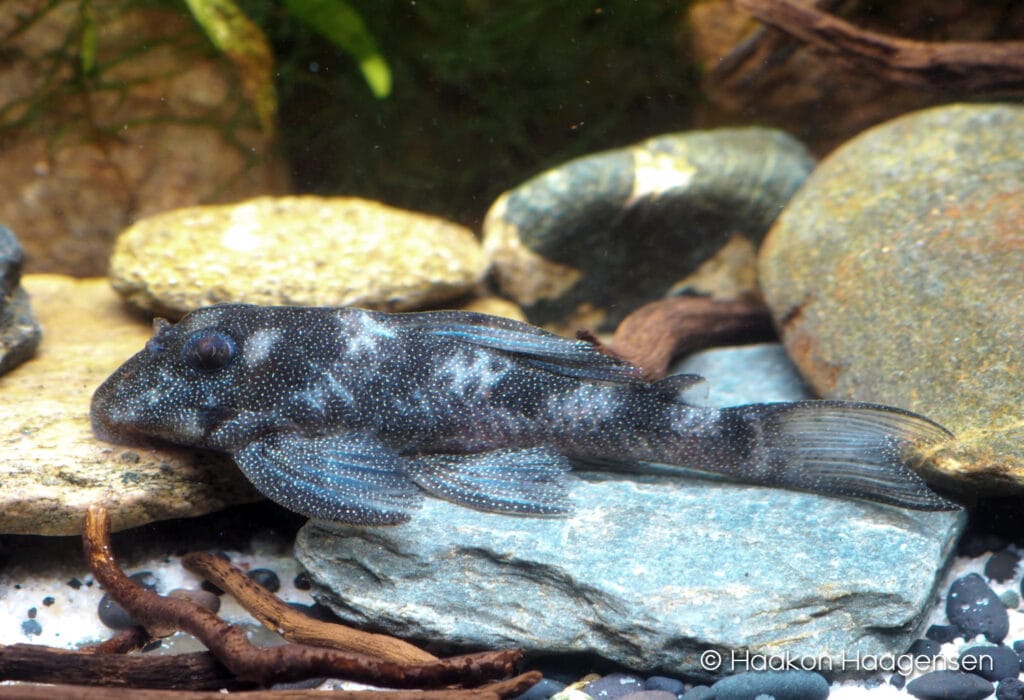







Of all known Hypancistrus species, none have as numerous, dense, small spots as L262. It may slightly resemble some other Hypancistrus forms in the hobby; L136 and L404, but these grow larger. L262 is in fact one of the smaller representatives of the genus, rarely exceeding 10 cm (4’’) TL. It’s also a regular encounter in the trade, as it’s allowed for export from Brazil and fairly straightforward to breed in captivity.
Facts:
Name: Hypancistrus sp.
Trade names: Stardust Pleco, L262
Origin: Rio Tapajos, Brazil
Maximum size: 10 cm / 4”
It shares the Tapajos river with L260, and interim (crossbreeds?) forms displaying a mix of spots and lines have been found in the river (check the profile of L260 for picture). They are separated by a waterfall, and L262 is from upriver beyond Itaituba. In the Rio Jamanxim, and affluent to the Rio Tapajos, a more golden form of L262 is found. This is rarely traded. L262 needs an aquarium set up consisting of lots of hiding places in the form of rocks, wood and of course specially made caves that suit their measurements. In these the males will eventually guard their offspring. They prefer water that is warm (27-30 C), soft and slightly acidic. Most of all it should be well oxygenated and clean, so a good filtration system and frequent water changes are essential. It’s a rather small and timid species that should not be exposed to too much competition over food and shelter. Among themselves they are peaceful, although males may quarrel for caves and females can sometimes be badly injured or even killed during the breeding-trapping in the male’s cave. Males develop longer odontodes on their pectoral fins and on their cheeks and have broader heads. Hypancistrus are mostly carnivorous, so a selection of crustaceans, insect larvae and fish meat should be offered along with high quality dried foods that also contain some vegetable matter.
More info:
